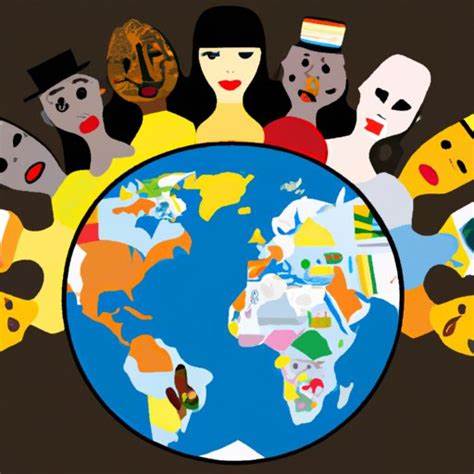In the era of globalization, the world has become more interconnected than ever before. Advances in technology, transportation, and communication have brought people from diverse cultural backgrounds into closer contact, fostering an exchange of ideas, values, and traditions. While this increased interaction has led to greater cultural understanding and innovation, it has also given rise to conflicts and challenges as different cultures collide. This article explores the dynamics of cultural conflict and integration in our globalized world.
Cultural Conflicts
- Identity and Tradition: As cultures interact, there is often a tension between preserving traditional practices and adapting to new influences. For many communities, cultural identity is closely tied to long-standing traditions and values. The influx of new ideas and ways of life can be perceived as a threat to these traditions, leading to resistance and conflict. For instance, the spread of Western consumer culture has sometimes clashed with local customs and values, causing friction and anxiety about cultural erosion.
- Language Barriers: Language is a fundamental aspect of cultural identity and communication. In a globalized world, multilingual interactions are common, but language differences can lead to misunderstandings and miscommunication. This can create barriers to effective collaboration and integration, fostering feelings of exclusion or resentment among those who feel their language and, by extension, their culture, is being marginalized.
- Economic Disparities: Globalization has led to significant economic shifts, benefiting some regions while disadvantaging others. These disparities can exacerbate cultural conflicts, as economically marginalized groups may feel resentful towards those who have benefited more from global integration. This can lead to social tensions, xenophobia, and cultural clashes, particularly in areas experiencing rapid economic change.

Cultural Integration
- Cultural Exchange and Innovation: One of the most positive aspects of globalization is the rich cultural exchange it facilitates. When different cultures interact, they can share ideas, art, cuisine, and technology, leading to vibrant cultural landscapes and innovative new practices. For example, the fusion of different culinary traditions has given rise to exciting new cuisines that reflect a blend of diverse cultural influences.
- Global Citizenship: Globalization has fostered a sense of global citizenship, where individuals see themselves as part of a larger, interconnected world. This perspective encourages empathy, cooperation, and mutual respect across cultural boundaries. Educational programs, international travel, and digital communication platforms have all contributed to this emerging global consciousness.
- Cultural Hybridization: Cultural integration often results in hybrid cultures, where elements from different traditions blend to create something new and unique. This process can be seen in various aspects of life, from fashion and music to language and social norms. Hybrid cultures celebrate diversity and demonstrate the dynamic, evolving nature of human societies.
Navigating Cultural Conflicts and Integration
To navigate the complexities of cultural conflicts and integration in the era of globalization, it is crucial to foster open-mindedness, empathy, and dialogue. Here are some strategies to promote cultural harmony:
- Education and Awareness: Promoting cultural literacy through education helps individuals understand and appreciate different cultural perspectives. This can reduce prejudices and promote a more inclusive and respectful society.
- Inclusive Policies: Governments and organizations can implement policies that promote inclusivity and equal opportunities for all cultural groups. This includes language support services, anti-discrimination laws, and initiatives that celebrate cultural diversity.
- Intercultural Dialogue: Encouraging open and respectful dialogue between different cultural groups can help resolve conflicts and build mutual understanding. Community programs, cultural exchanges, and international collaborations can facilitate these interactions.
In conclusion, globalization presents both challenges and opportunities for cultural integration. While it can lead to conflicts and tensions, it also offers the potential for rich cultural exchange and innovation. By fostering education, inclusivity, and dialogue, we can navigate the complexities of our interconnected world and build a more harmonious and culturally enriched global community.
